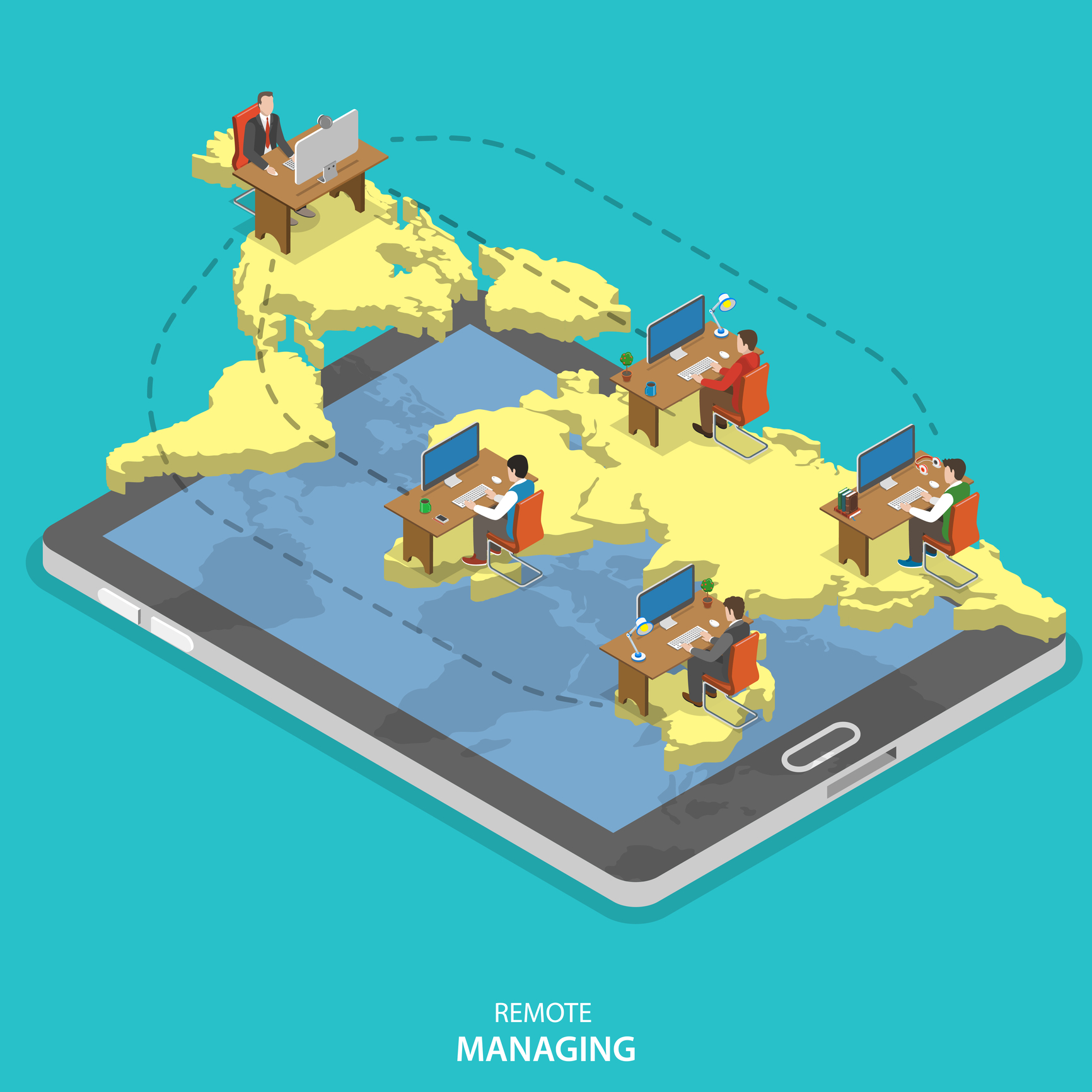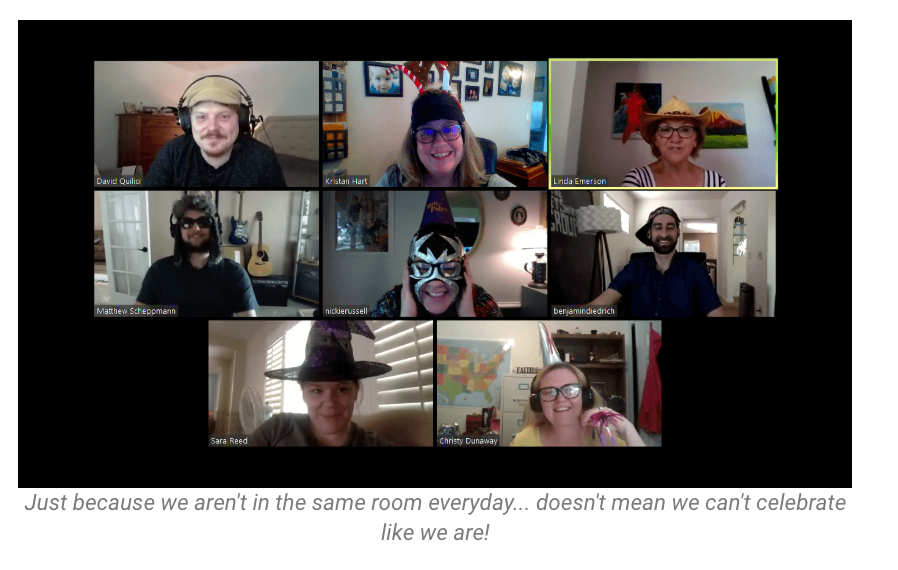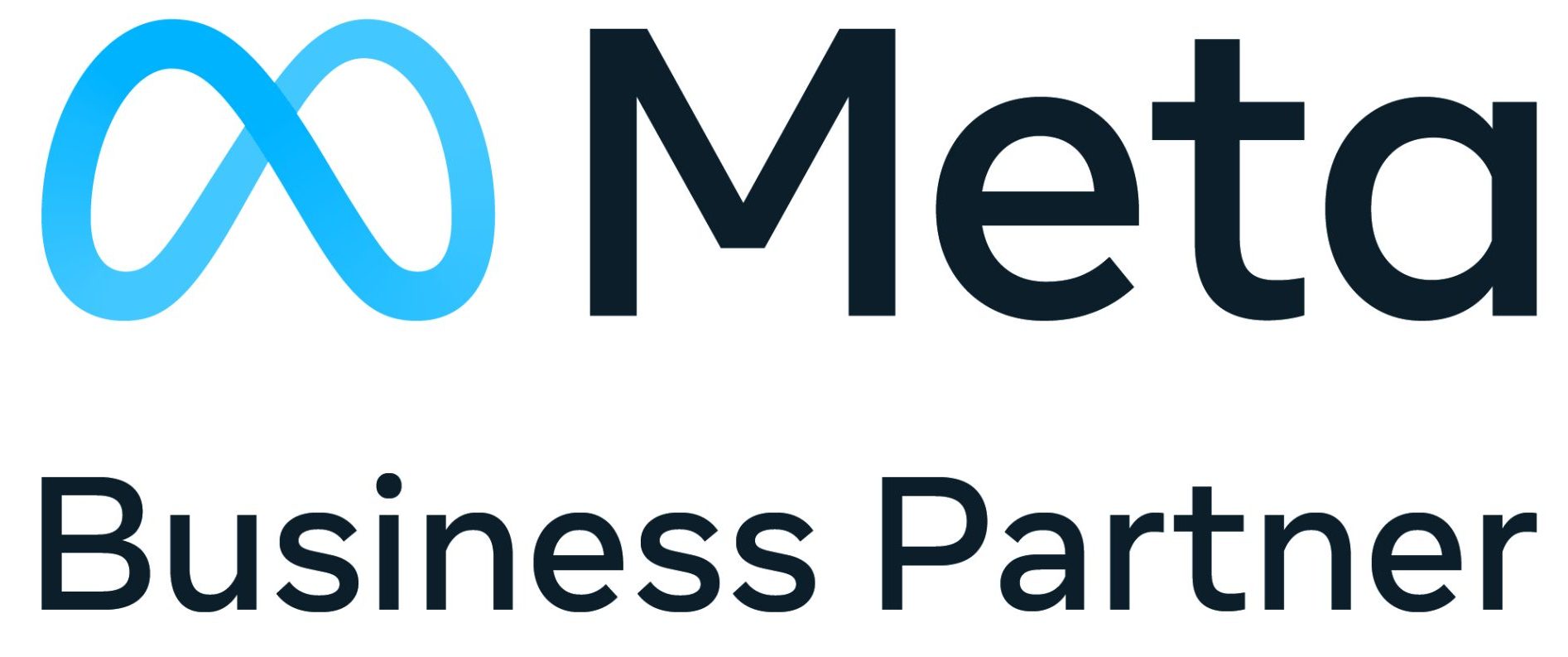
The Get Smart Group is 11 years old this year. That’s quite an accomplishment and one that Ali and I are really proud of. We’ve been through a lot of iterations of company direction, composition of our team, clients and too many things to count. Over the years we’ve swung back and forth as to whether we wanted to have a “real office” or run an entire team of remote employees. This is the story of what we’ve learned, what works, what doesn’t and what we reinforce every week to keep it successful while hopefully giving you insight into how we successfully manage a remote team.
To Office or Not To Office
11 years ago, The Get Smart Group was just two of us. We had a few fits and starts where we’d add someone, lose someone, add two people and so on. When the company was ready to really begin adding employees, we made the convenient decision to move to one of the smallest counties in California with an equally small talented pool of potential employees… Around 2012 it became time to add a “real” employee. Ali and I had been working from home for much of our respective careers and through the entirety of The Get Smart Group so far. Did we need an office? Could we afford an office? How do you manage someone?
After deciding that an office was not in our financial future, our first two employees were remote. One lived nearby, the other was a few hours away. Then we hired another local. And then we set up space in our home for the local folks to work. After a few weeks of this, we realized there were people in our home working before we had even begun our day. It was time for an office.
The Get Smart Group is located in a small gold rush town called Angels Camp with limited real estate options. We didn’t really need (or want) retail space since we don’t rely on foot traffic for new clients. Thankfully we found a small 2nd-story office space with a huge balcony overlooking main street. Desks were built, chairs were purchased. We even made our own whiteboards! The Get Smart Group was becoming a “real” company right before our eyes. As the months went on, we added more employees – some local, some remote. I began to realize we had some conflicts between the two groups and began to devour as many books on managing remote teams as I could. Since then, we’ve grown to a bigger office, added more people and now have over 20 people on the team. In early February of 2020 we made the decision to have everyone work from home full time. Oddly enough, it had nothing to do with the soon-to-come COVID-19 virus quarantines, it was just the right move at the right time.
So, with that introduction, here are some of the best guiding principles I’ve instituted over the past few years that make our remote team a resounding success.
How To Manage a Remote Team
I read a bunch of books. Listened to countless podcasts. Worked with our amazing business coach, Dr. Steven Goodwin from Turning West. And I came to one very clear conclusion: No one knows how to manage a remote team. There was no consensus among various authors and managers. However… a not-really-directly-management theme began to emerge: Company Culture was Key.
Company Culture Matters
I was a little worried. “Culture” was a word that got thrown around a lot along with things like Mission Statements, Company Values and vague C-level titles like “Chief of People”. What would a small, then-10-person company do about culture? It’s taken a long time but I’ve got a few take-aways about culture that have held true for us over the years and help foster an amazing team.
You need company values. You can read ours here. These define who we are and what kind of people we want to work with. Now, when we’re hiring for a new position, the first metric we use to measure a potential candidate is, “Would they fit in from a cultural perspective”. If the answer is no, or even maybe, they don’t make the cut, period. We were recently hiring for some new technical positions and one of the candidates that stood out was exceptional on the technical side. But after a round of interviews, we realized that there was no way this person would fit in with the team. As disappointing as that was, we moved on and ended up with an excellent addition to the team.
Our most-discussed value is Character Trumps Talent. It doesn’t matter how good you are at your job, if you don’t have character you don’t work here. If you’re not willing to own your successes and failures, treat our team and our clients with respect and live a life of character, you don’t work here. This value along with, Innovation, Mentoring, Doing Good, Doing More, and Integrity, has let do a process of hiring to these values which has led to our amazing team. Kristan always tells prospective employees that we are a “zero drama team” to which she always gets a laugh before doubling down. “No, really – we really like each other, we work hard, we help each other and we don’t deal with drama”. This doesn’t mean that we don’t recognize each other as human and apt to struggles in life. It means that on an interpersonal level, we don’t tolerate people who like to stir the pot.
We didn’t really know what we were doing when we focused on culture about 7 years ago, but sticking to the plan has gotten us over probably the biggest hurdle in making a remote team work, No Drama. Without drama, managing a successful remote team becomes one step closer to reality.
Every Call is on Video
I’m a tech guy. I love technology and all the trappings therein. I’ve discovered that most people are not tech people. But some technology is critical to making remote teams work. We went through the usual candidates for video/chat tools like Skype, Hangouts, GoToMeeting, Webex and others. Then along came Zoom and we were hooked. It is by far the best tool in the video-conferencing space for reasons beyond the scope of this post. We’d use video sporadically with clients and very rarely among the team.
Then one day, I listened to an interesting interview talking about the importance of non-verbal communication as it related to employee and client relationships and instituted a new rule: Our 3x per week staff meetings would have everyone on video.
I don’t throw the word “mutiny” around very often, but that word best describes the initial reaction to the video rule.
“I don’t like the way I look on video!”
“My hair isn’t done!”
“My office is messy!”
None of these are terribly good excuses for not being on video, by the way…
After about two weeks, you know what happened? Everyone forgot they were on video. But, we now had the advantages of non-verbal communication among the team and everyone knew everyone a little better. The natural flow of casual conversation emerged from an otherwise perfunctory business meeting. We could see artwork in the background. An occasional dog would bark or a cat would glide across the screen. We all got to know each other. Jokes about coffee mugs, “discussions” about sports teams, endless weather banter and general chit-chat became the norm. Were we spending another 4-5 minutes distracted from the task at hand? Yep. Is it worth it? 100%. Now, when we actually do see each other face-to-face, there is a closer connection. Team members are more willing to help each other out. It’s amazing.
Incidentally, about three weeks ago we made another small tweak: All client meetings are now done on video even if the client is not on video. This keeps our team accountable to the client and to each other. We again had a brief dissension among the ranks, but once again, most people stopped noticing because it was so common.
At this point I should apologize for a lack of sources to these tidbits. Many were picked up while listening to a podcast while dashing through an airport. As I rediscover the sources, I’ll link to them in the future.
Everyone Calls In
By about three years ago, half of our team was remote and half were in our growing small-town office. We had a nice conference room and for all of our team meetings I had the local team cram in so we could be on one video feed. The remote folks would be on their own video feeds. It worked. But there was something missing.
In yet another unlinked article, I read about the concept of “Everyone Calls In”. This was before the days of video conferencing and was coming from a Fortune 500 company. This company had about 10 people in the local office and 10 others scattered about. The local people would file into the conference room and the others would call in. Not only were they missing non-verbal communication (no video conferencing) but the remote attendees missed out on a lot of context, inside jokes and not knowing which slide to be on. So how does this apply to managing a remote team?
A new rule was created: Everyone Calls In. This meant that all of the local folks had to sit at their desks and actually dial into the conference call. Immediately, the local team had to provide the same verbal context for documents, power points and decision making. The remote team members felt much more included in the process and the success of the team soared.
Think about all the little things that happen in an in-person conference room…
People arrive early and engage in small talk.
The latest version of a presentation is distributed, by hand, to everyone in the room.
You can tell who is tired and give them a little slack. (The tired people on the phone may be judged a bit more harshly)
People stay late and engage in small talk.
When everyone is forced to call in, the experience is nearly identical for everyone. We made the same change, and much like the video rule above, the team got closer, more productive and we accomplished more than ever before.
Regular Office Hours
The Get Smart Group is comprised of people throughout California, Missouri, Alabama and Pennsylvania (so far). Managing time zones is tough. So we created office hours. We ask that everyone maintains regular hours and that the majority of those hours overlap with 9am to 5pm Pacific time. This way everyone knows when to count on each other, when to schedule meetings and when to expect deliverables.
“This is a real job,” is a phrase uttered during our hiring process to all applicants. We also repeat it to friends and family who will often say things like, “Hey, you work from home, come join me for a two hour lunch.” Nope. This is a real job, with real hours, real expectations, real deliverables, real clients and real paychecks. The moment that people who “work best at night” or “can’t commit to regular hours because I’m not a morning person” start to reveal themselves, we realize it’s not a good culture fit and work on a transition plan.
Regular hours may feel like an anachronistic limitation harkening back to the days of factory work, but they exist for a reason. When everyone can work together, we get more done, have more fun and end up even more creative.
What Would It Look Like if We Were All in The Same Room?
Sorry about the wordy title. There’s no easier way to put this incredibly important question. At least twice a week, I ask this very question during our staff meetings. I ask it during one-on-one meetings with team members. You have to ask this question internally every single day.
If several people are in the same room as another person making a phone call, some of that phone call will be overheard by others. And information gets transferred without having to be explicit about it. Sometimes these other people will actually chime in to help the person on the phone. Answers tend to come faster. Work gets done quicker. There are fewer opportunities for the details to fall through the cracks.
By very definition, remote team members do not share the same room. So what do you do? We’ve come up with a few written rules and countless unwritten rules to manage a remote team. Some of the highlights:
- We keep a client “workbook” that is one, long google doc that entails note from every client interaction over time. The most recent conversation is always on top. After a call, email exchange or decision has been made, notes are put into the workbook. Sometimes they’re cleaned up, sometimes they’re more stream-of-consciousness. But the important thing is that another team member can review a few pages of the workbook and be up to speed very quickly.
- These same notes are posted in the client Slack channel in real time so everyone working on that account knows what is happening as it happens.
- We include others on client (video) calls, even if they’re just there to listen. Not all the time, but when it makes sense.
- We have regular sub-group meetings of key team members who need to be on the same page more often than not.
- We use an incredibly powerful tool called AirTable to manage all projects, notes and deliverables.
It’s not easy. But if we don’t constantly ask how our workflows would be improved if we were in the same room together and then come up with a process to mimic that closeness using technology, we wouldn’t have such a great team.
Our Technology Stack
We rely on a lot of amazing technology to keep things running smoothly around here. Going into detail on each of these tools is way beyond the scope of this post, but I want to leave you with a list of tried-and-true tools that we use every day:
- Slack for internal chat. We have a separate channel for every client and every project.
- Airtable for project management. This is one of the geekier solutions, but when properly implemented, absolutely amazing.
- Dropbox for sharing large files.
- Google Suite for Business. This is for email, document sharing, and all sorts of other collaborative goodies.
- Harvest for time tracking.
- Nextiva for phones. Everyone has a real phone on their desk, wherever they are. And we have an actual phone number. Just like a “real” business…
- Zoom for meetings. The best video meeting software on the market.
We’re Always Improving
There are many other small things that have become ingrained in our company culture that help us manage a remote team. I’ve covered the big ones above and will continue to post about these tips and tricks as we learn more and implement them here at The Get Smart Group.
Stay on top of your teams, give them the joy of working from home and hire for culture and you’ll have some of the best, most creative people working in your organization in no time.
If you’d like to explore this further or have any questions, please feel free to give us a call anytime. It has truly been a journey and I’d love to help you along the same path. Given the rapid change in working conditions with the COVID-19 virus, we could all use a little input into improving remote teams.










